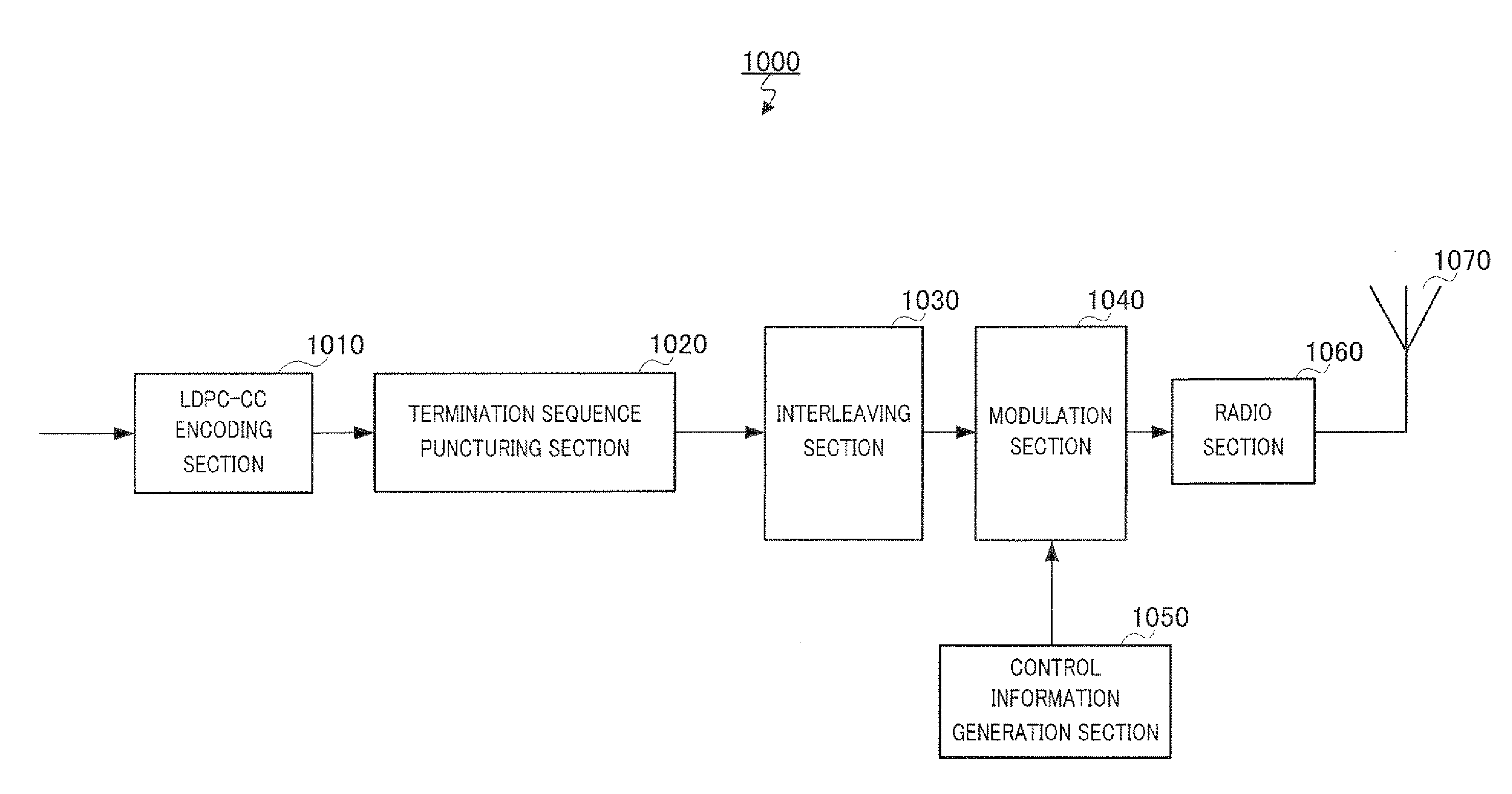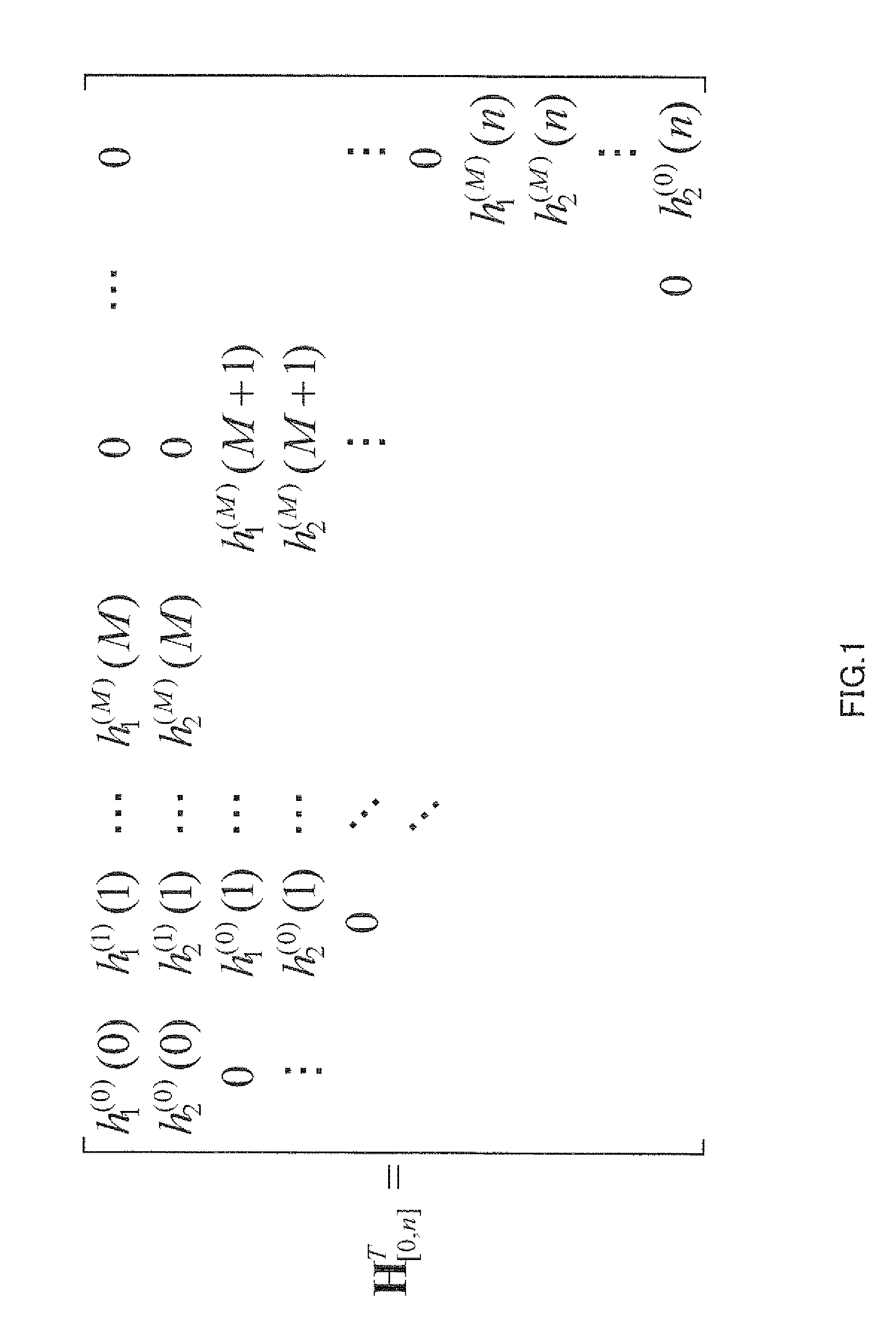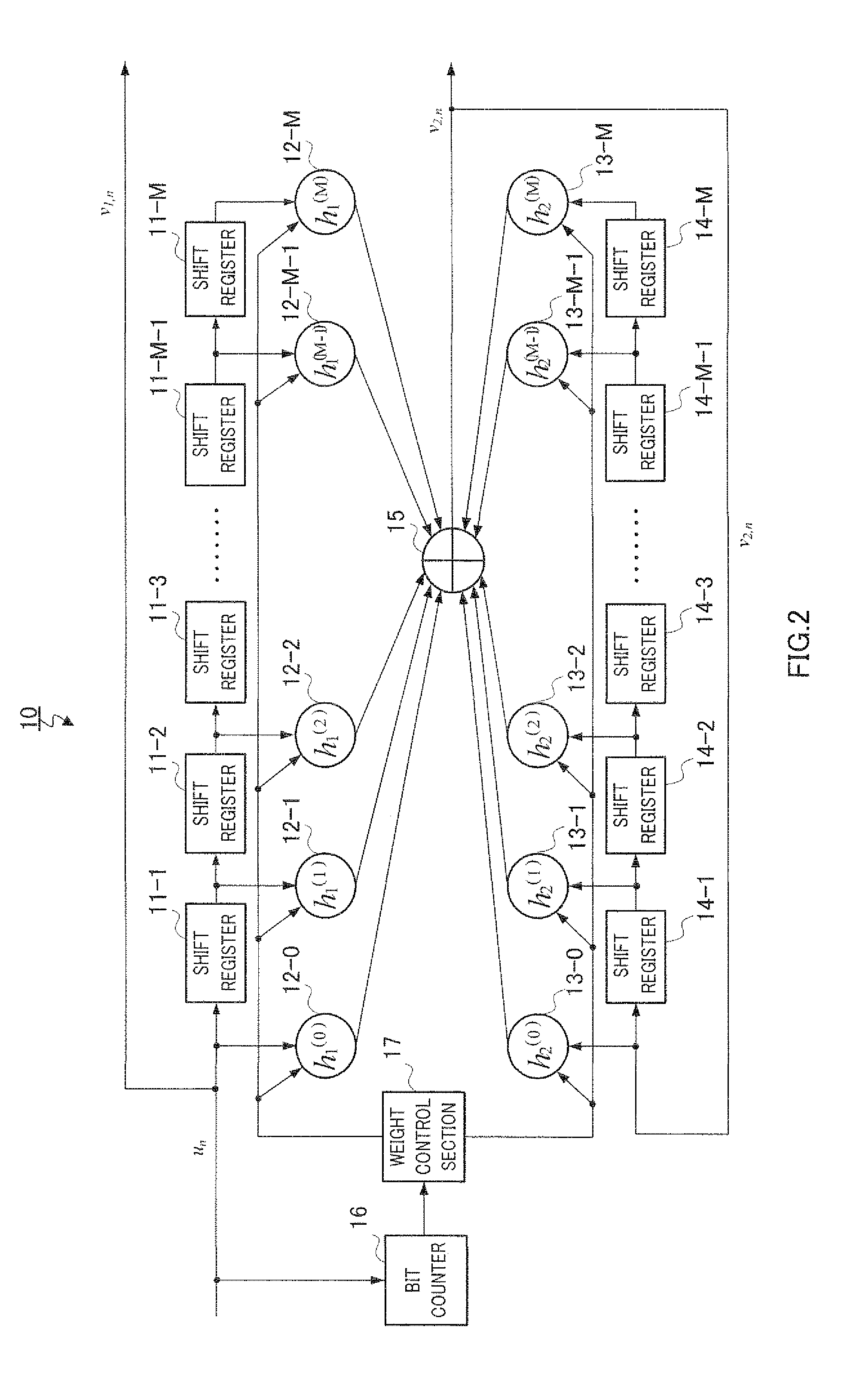Low-density parity check convolution code (ldpc-cc) encoder and ldpc-cc decoder
a low-density parity and convolutional code technology, applied in the direction of code conversion, error correction/detection using convolutional codes, code encoders, etc., can solve the problem of changing the coding rate, difficult to decide the states uniquely at the receiver side, errors increasing at the end of the received information sequence obtained after decoding, etc. problem, to suppress the degradation of transmission efficiency and reduce the amount of termination sequences. , the effect of reducing the amount of termination sequences
- Summary
- Abstract
- Description
- Claims
- Application Information
AI Technical Summary
Benefits of technology
Problems solved by technology
Method used
Image
Examples
embodiment 1
[0081]In this embodiment, descriptions are given of a parity check matrix and a configuration of an encoder that performs LDPC-CC encoding using that parity check matrix. The parity check matrix described in this embodiment is that matrix elements corresponding to the rear M bits of a transmission information sequence have been deformed from the parity check matrix in order to reduce the number of termination sequences.
[0082]FIG. 3 shows an example of a parity check matrix of an LDPC-CC. Parity check matrix 100 in FIG. 3 is an example of a case with memory length M=5, coding rate 1 / 2, and transmission information sequence length n. For the sake of simplicity, FIG. 3 shows only a part corresponding to the end part of a transmission codeword sequence, and the following termination sequence, extracted from parity check matrix 100.
[0083]In parity check matrix 100, rows correspond to bits of a transmission codeword sequence, termination sequence, and zero sequence. Also, columns p1, p2, ...
embodiment 2
[0124]In this embodiment, descriptions are given of a parity check matrix that is designed so that memory length M of LDPC-CC decreases toward the rear of a transmission information sequence in order to reduce the number of termination sequence, and a configuration of an LDPC-CC encoder that is based on that parity check matrix.
[0125]FIG. 9 shows an example of a parity check matrix according to this embodiment. Parity cheek matrix 600 in FIG. 9 is an example of a case with coding rate R=b / c=½ and transmission information sequence length n. Parity check matrix 600 differs from parity check matrix 100 in FIG. 3 that memory length M decreases from 5 to 4 to 3 successively as the index of transmission information sequence ut approaches n.
[0126]That is to say, as shown in FIG. 9, when parity check matrix 600 is used encoding is performed for transmission information sequence ui through un−4 with memory length M=5, and transmission codeword sequences v1,1 through v1,n−4 and v2,1 through v...
embodiment 3
[0156]In this embodiment, descriptions are given of a parity check matrix that is designed so that the coding rate of LDPC-CC decreases toward the rear of a transmission information sequence in order to reduce transmission errors in the rear part of a information sequence by reducing the number of termination sequences, and a configuration of an LDPC-CC encoder that is based on that parity check matrix.
[0157]FIG. 12 shows an example of a parity check matrix according to this embodiment. Parity check matrix 800 in FIG. 12 is an example of a case with memory length M=5 and transmission information sequence length n. Parity check matrix 800 differs from a conventional LDPC-CC parity check matrix in that coding rate R decreases from ½ to ⅓ to ¼ successively as the index of transmission codeword sequence u1 increases.
[0158]That is to say, as shown in FIG. 12, when parity check matrix 800 is used encoding is performed for transmission information sequence ui through ui+7 with a coding rat...
PUM
 Login to View More
Login to View More Abstract
Description
Claims
Application Information
 Login to View More
Login to View More - R&D
- Intellectual Property
- Life Sciences
- Materials
- Tech Scout
- Unparalleled Data Quality
- Higher Quality Content
- 60% Fewer Hallucinations
Browse by: Latest US Patents, China's latest patents, Technical Efficacy Thesaurus, Application Domain, Technology Topic, Popular Technical Reports.
© 2025 PatSnap. All rights reserved.Legal|Privacy policy|Modern Slavery Act Transparency Statement|Sitemap|About US| Contact US: help@patsnap.com



